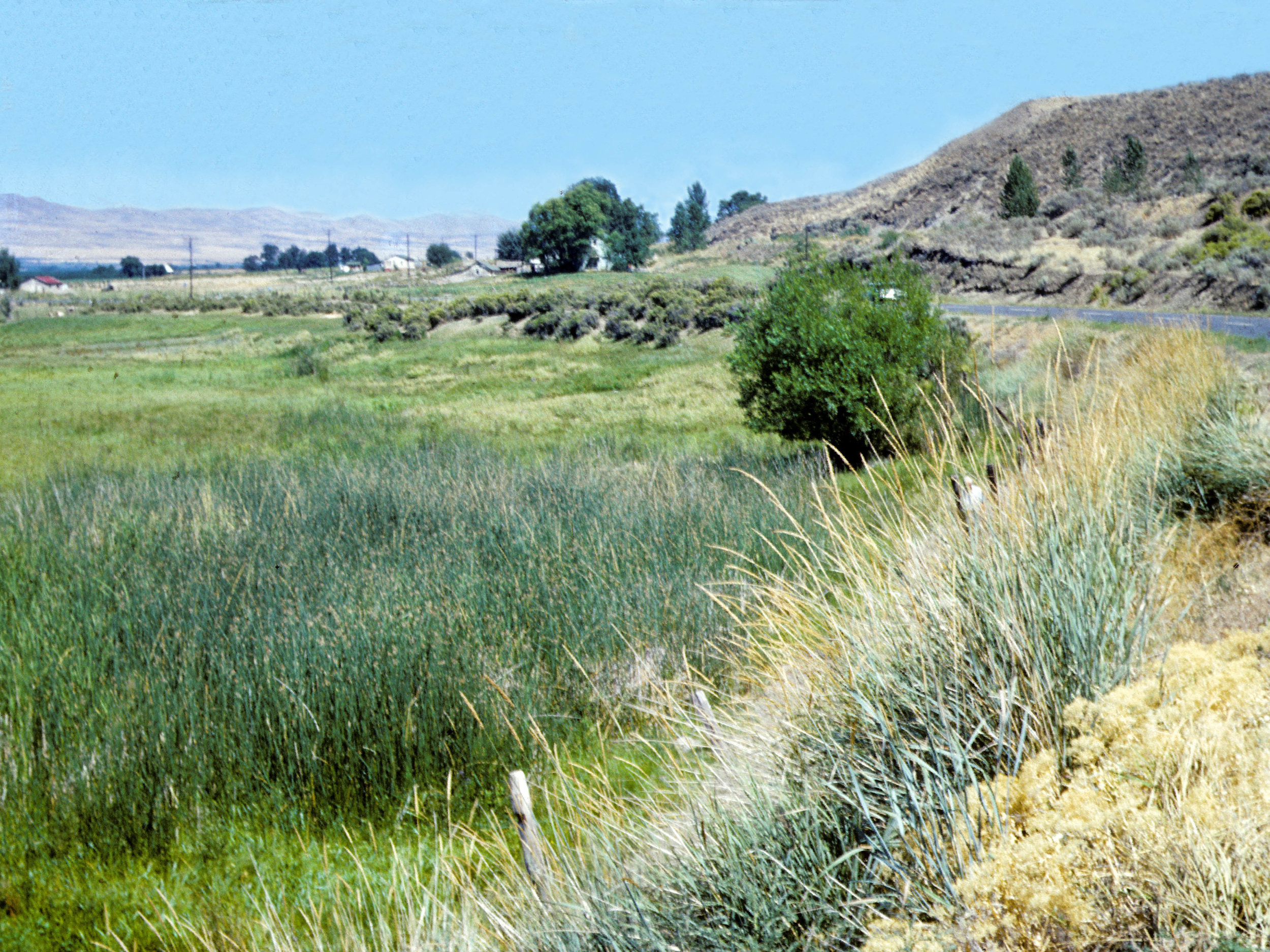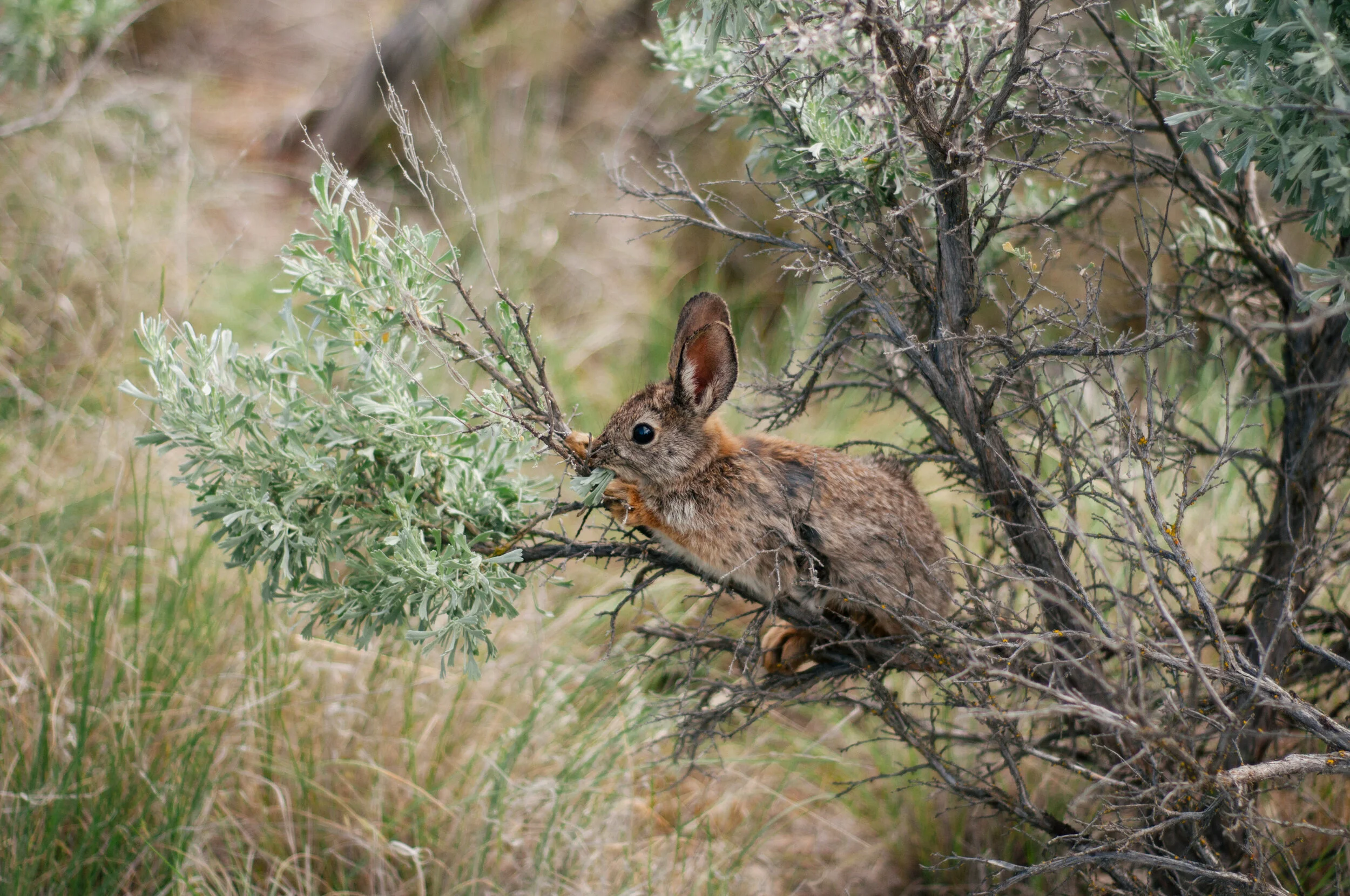A quiet county road winds along the base of the Rattlesnake Hills, near Yakima. To the south are sage-dotted slopes and a mobile home park. To the north, publicly managed land paired with miles of agriculture. Tucked in between, a small, wildly lush patch at the edge of the working ranchland: This untamed little parcel is Moxee Bog, one of The Nature Conservancy’s first preserves in Washington.
Easy to miss, Moxee Bog certainly qualifies as an “underdog” landscape — technically a wetland, it is a small, unassuming plot that is easy to ignore. Yet it has played an important ecological role throughout an unusually distinguished history. In 1963, entomologists determined that Moxee Bog was among the only Eastern Washington habitats to support a butterfly called the silver-bordered fritillary (Boloria selene). The butterflies flocked here for their favorite larval food: northern bog violets growing in the spring-fed habitat.
At the suggestion of entomologists, The Nature Conservancy purchased the 10-acre wetland in 1966 for $1,400. It was the Conservancy’s first preserve in the United States established for the conservation of an invertebrate. Each year, scientists counted hundreds of the gold and black butterflies flitting among the bog’s purple violets. Moxee Bog, in its own way, was a celebrity landscape.
But sometimes, things change. A fence put in to deter grazing may have had unintended effects, allowing successive growth of woody plants, such as willows, to crowd out most of the wild violets that attracted the silver-bordered fritillary to Moxee Bog. Sadly, no one has seen any of these butterflies there since 1992. Moxee Bog Preserve no longer hosts the creature it was established to protect.
The Moxee Bog preserve pictured in 1966, right, and 2013. Move the slider to reveal the expansion of woody plants, which crowd out key species like wild violets.
While the silver-bordered fritillary can still be found in Western Washington, it is much rarer east, explains Washington State University entomologist David James. According to James, the butterfly occupies only two locations in the region today, one near Sprague and the other near Bridgeport. “Moxee Bog was an important location for the species, giving it a presence in the Yakima Valley,” he says.
That makes this disappearance particularly disappointing. But this provides an important reminder: Conservation is an evolving process, and to learn you have to try. Moxee Bog still has important ecological value, explains Randi Shaw, stewardship manager for the Nature Conservancy in Washington. And its continued preservation reflects the Conservancy’s own strategic evolution to whole system/landscape-scale conservation efforts.
“In this arid region, wetlands like Moxee Bog are critical habitat spaces, given that water is a principal limiting factor for life in these ecosystems,” Randi says. “Moist sites in arid regions are ecological hot spots. But in general, they only make up about 2 percent of the land. Rare or unusual species can be found at such sites as a result. Moxee Bog is a good example.”
The Conservancy has evolved our focus for Moxee Bog to ensure a management plan that matches the changing conditions. Local volunteer leader Paulette Murphy has led the charge, convening the Native Plant Society, the Washington Butterfly Association and others to explore the potential of future efforts at restoring the wetland habitat.
Moxee Bog is getting well-deserved boots-on-the ground attention, too. Last September, Conservancy volunteers converged on the site to clean up accumulated litter dumped or blown in from the adjacent road. And volunteers from several organizations return regularly to survey for bog violets, butterflies and other native species. “We value the community’s interest in these 10 acres,” says Eastern Washington Stewardship Coordinator Nick Altadonna. “We’re excited to see volunteers stepping up to help.”
Moxee Bog may once again provide a soft landing for the silver-bordered fritillary, alongside a diverse set of species that relies on such rare, wet oases within Eastern Washington’s arid lands.































